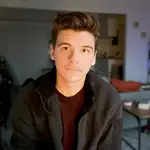Petra: The Lost City Carved Into Sandstone

Maya-Anaïs Yataghène/Wikimedia CommonsPart of Petra’s fame today comes from its appearance in the 1989 film Indiana Jones and the Last Crusade.
Petra, the massive city carved directly into sandstone cliff faces in Jordan, was once the capital of the Nabataean Kingdom. Archaeological evidence suggests the Nabataeans inhabited Petra as far back as 312 B.C.E., and the city reached its peak around the first century C.E. as a thriving trade center and cultural hub.
The Nabataeans were masterful builders and hydraulic engineers who transformed this desert location into a prosperous metropolis. They carved elaborate temples, tombs, and monuments directly into the rose-colored sandstone cliffs, creating architectural marvels that still captivate visitors today.
The city’s strategic position along ancient trade routes connecting Arabia, Egypt, and the Mediterranean made it a crucial commercial crossroads where frankincense, myrrh, spices, and other valuable goods exchanged hands.
The Nabataean Kingdom fell to the Romans in 106 C.E., and as the civilization was absorbed into the Roman Empire, Petra became unimportant. The Romans already had plenty of trading hubs of their own, and as people left Petra behind, it slowly fell into decay. Earthquakes in the region further damaged the cliff-embedded city and its intricate water systems, causing even more residents to move elsewhere. Over time, the world seemed to forget about Petra altogether.

Bernard Gagnon/Wikimedia CommonsThe Great Temple of Petra, which may have been either a religious or administrative building.
It wasn’t until the early 1800s that Petra was “rediscovered” by the Western world. Then, a Swiss explorer named Johann Ludwig Burckhardt heard rumors of the lost city while traveling in the Middle East. He disguised himself in Muslim attire and convinced his Bedouin guide to lead him to the ancient site.
Today, Petra stands as Jordan’s most valuable archaeological treasure and tourist attraction. In 1985, it was declared a UNESCO World Heritage Site, and it was named a New Wonder of the World in 2007.





